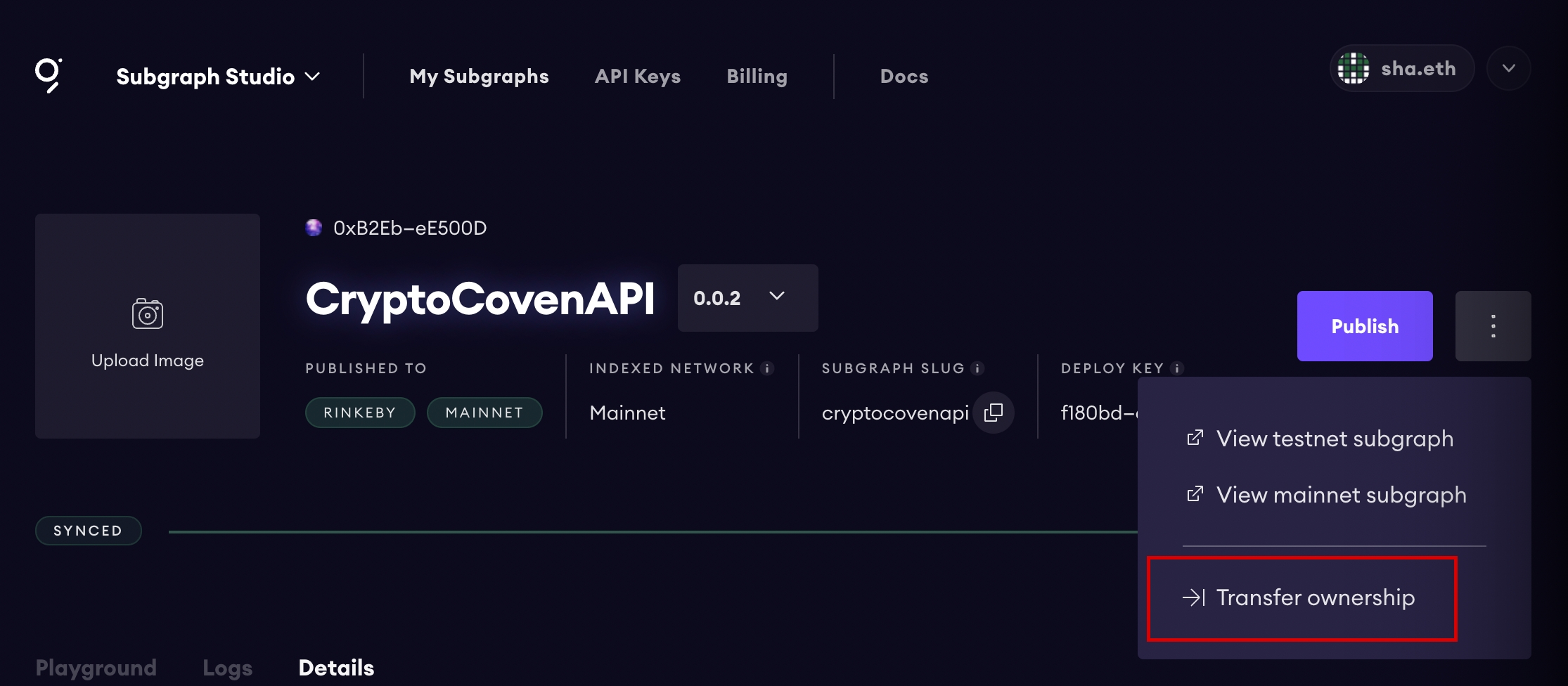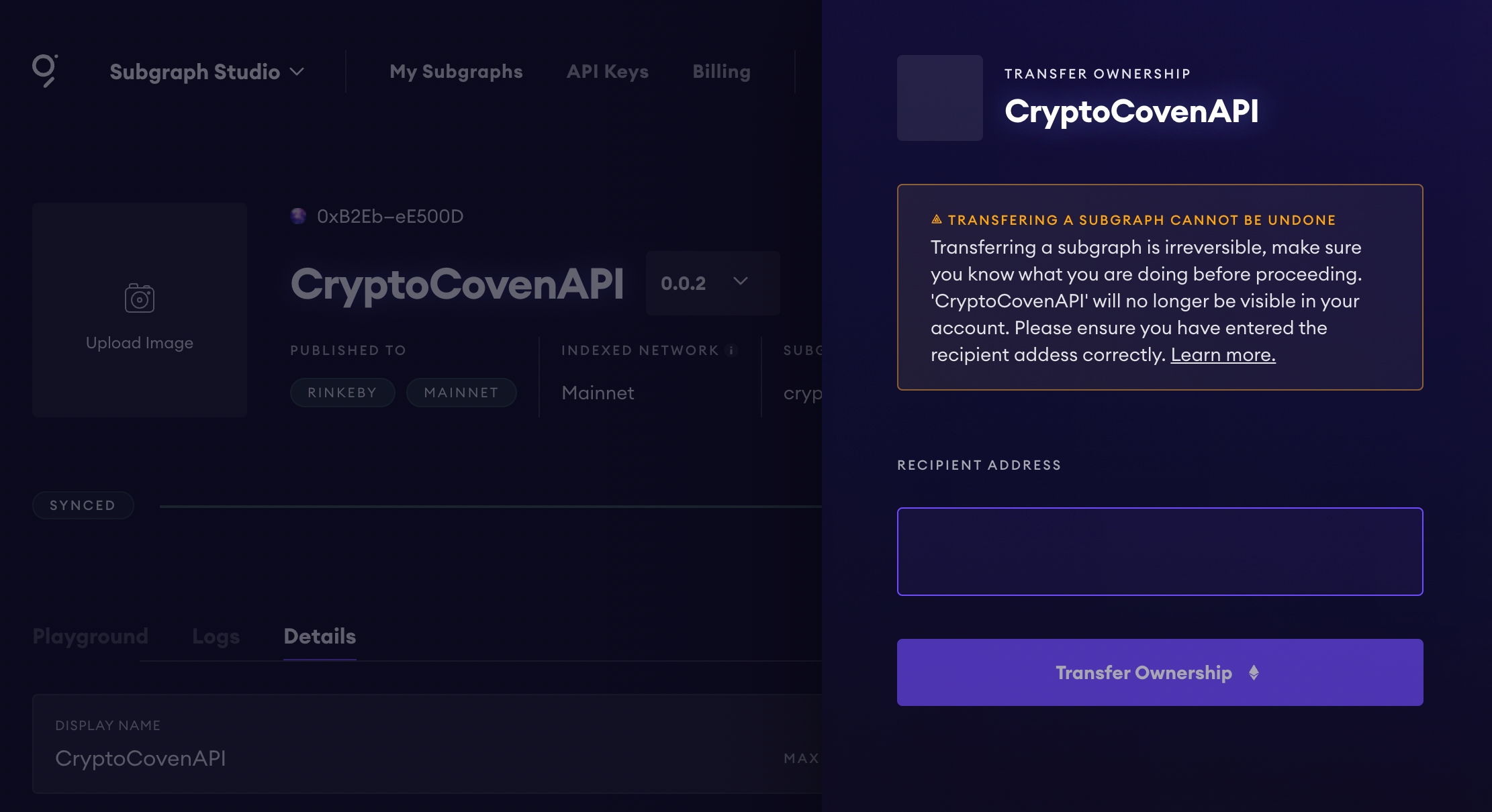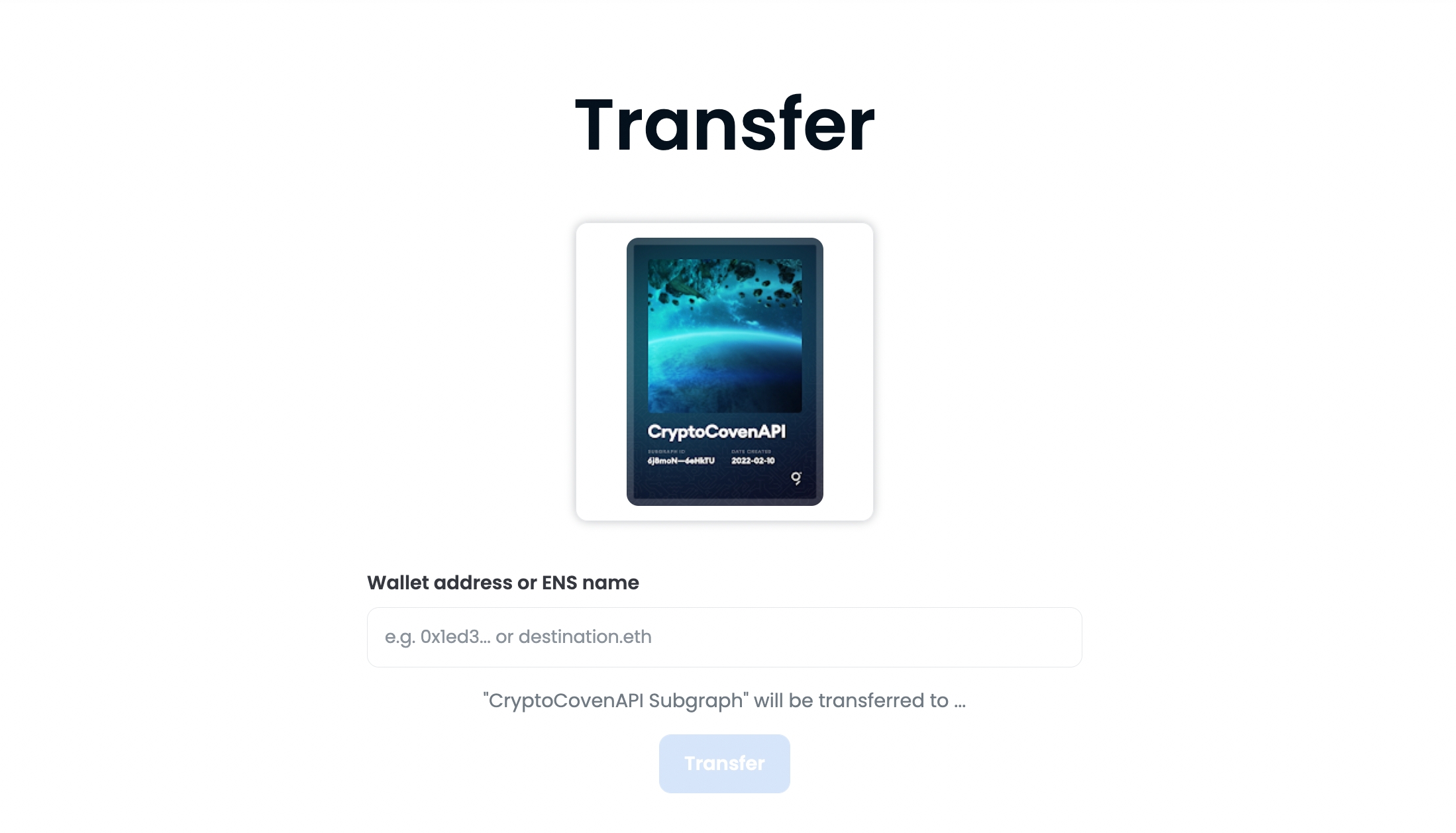Transferring Subgraph Ownership
The Graph supports the transfer of the ownership of a subgraph.
When you deploy a subgraph to mainnet, an NFT will be minted to the address that deployed the subgraph. The NFT is based on a standard ERC721, so it can be easily transferred to different accounts.
Whoever owns the NFT controls the subgraph. If the owner decides to sell the NFT, or transfer it, they will no longer be able to make edits or updates to that subgraph on the network.
In addition to adding more flexibility to the development lifecycle, this functionality makes certain use cases more convenient, such as moving your control to a multisig or a community member creating it on behalf of a DAO.
Viewing your subgraph as an NFT
To view your subgraph as an NFT, you can visit an NFT marketplace like OpenSea:
https://opensea.io/your-wallet-addressOr a wallet explorer like Rainbow.me:
https://rainbow.me/your-wallet-addresTransferring ownership of a subgraph
To transfer ownership of a subgraph, you can use the UI built into Subgraph Studio:

And then choose the address that you would like to transfer the subgraph to:

You can also use the built-in UI of NFT marketplaces like OpenSea:

Last updated
Was this helpful?